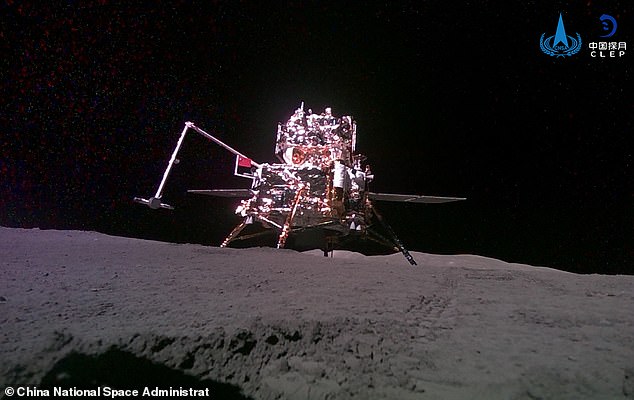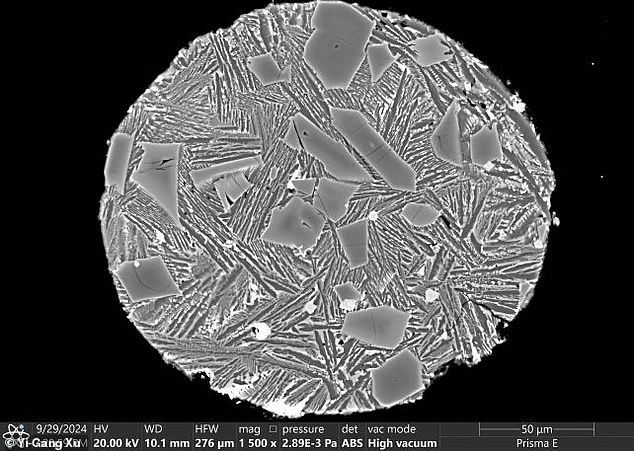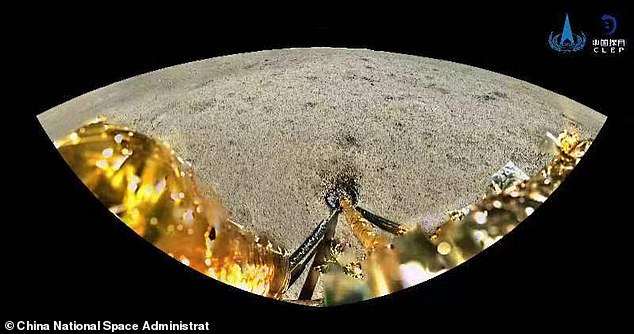A human space probe has brought back an ancient extraterrestrial visitor from the moon, rewriting the early history of the solar system.
China‘s Chang’e-6 spacecraft made history in June 2024 by returning the first-ever samples from the moon’s far side, a region humans had never explored before.
In a new study, scientists examined the dusty soil from an ancient crater called the Apollo basin and found seven tiny rock pieces that didn’t belong to anything that naturally formed on the moon’s surface.
These small fragments turned out to be leftovers from ancient asteroids that crashed into the moon billions of years ago.
Unlike normal moon rocks, these pieces came from watery asteroids that floated into space between Mars and Jupiter, making them true ‘extraterrestrial relics’ from outside our planet.
Moreover, scientists from the Chinese Academy of Sciences discovered that the relics came from the same type of space rocks that likely delivered chemicals necessary to spark life on planets like Earth billions of years ago.
Asteroids like these delivered water and other key ingredients to the moon early in its history, possibly helping create its thin water ice deposits we see today.
On a larger scale, the new findings have rewritten our understanding of how space rocks shaped the Earth and moon, since Earth’s meteorite finds are limited by our atmosphere and gravity, burning up potential samples before they can be studied.

China’s Chang’e-6 lander (pictured) returned to Earth in June 2024 and scientists have just uncovered an extraterrestrial relic deposited by an asteroid in the moon samples

The samples (pictured) are completely foreign compared to the makeup of the moon, meaning asteroids likely brought the ice water found on the lunar surface
The far side of the moon is the hidden half we never see because our planet and the moon are tidally locked, meaning we always see the same face from our perspective.
Specifically, the team identified these seven fragments as leftovers from a rare type of asteroid called CI-like carbonaceous chondrites.
At the heart of these mysterious samples were tiny green crystals called olivine, which look like olive-shaped gems and make up the backbone of the asteroids they came from.
Finding olivine in these space rocks was special because it’s loaded with water trapped inside, plus just the right mix of iron, zinc, and other metals not seen across the relatively dry moon.
The samples matched the composition of other nearby asteroids that astronomers and recently studied, including Ryugu, studied by Japan’s Hayabusa2 mission, and Bennu, studied by NASA’s OSIRIS-REx.
The research in the Proceedings of the National Academy of Sciences (PNAS) noted that most of the rocks ever taken back from the moon formed there over time.
Scientists knew the new samples from Chang’e-6 didn’t form on the moon because of their makeup and hidden chemical fingerprints, which included 10 to 20 percent water trapped in clay-like minerals, amino acids, and tar-like carbon compounds.
Scientists also uncovered lightweight gases like hydrogen, nitrogen, and sulfur, making these relics from space resemble soggy sponges carrying the seeds of oceans and air.

The Chinese lander collected over four pounds of rocks from the lunar surface after successfully landing on the moon’s far side in May 2024
Typical Moon rocks are mostly dry black lava stone and white feldspar, made from iron-heavy minerals, calcium, aluminum, and titanium, with almost no water at all.
‘This finding supports the hypothesis that asteroids played a role in delivering water and other volatiles to the lunar surface,’ the researchers wrote.
Experts believe these asteroid bits crashed into the moon’s far side over four billion years ago, during the chaotic formation of the early solar system, when giant impacts blasted materials across planets.
The discovery appeared to prove that a similar process involving water-carrying asteroids took place on the moon that scientists suspect occurred on Earth at the dawn of time.
One theory argues that asteroid collisions like the ones found on the moon are believed to have slammed into our planet as well, creating oceans and scattering amino acids – the basic ingredients that kickstarted tiny life forms in Earth’s warm pools.
Scientists believe the same asteroid rain hit other planets, too, like Mars, where it might have created ancient rivers and maybe even early microbes hiding underground today.
Even icy moons like Europa around Jupiter could have gotten a life-giving boost from these asteroids, delivering heat, water, and chemicals deep into their frozen oceans to brew something organic.
NASA, China, and India have all announced that they will be sending additional missions to the moon before 2030, including manned missions by the US.
